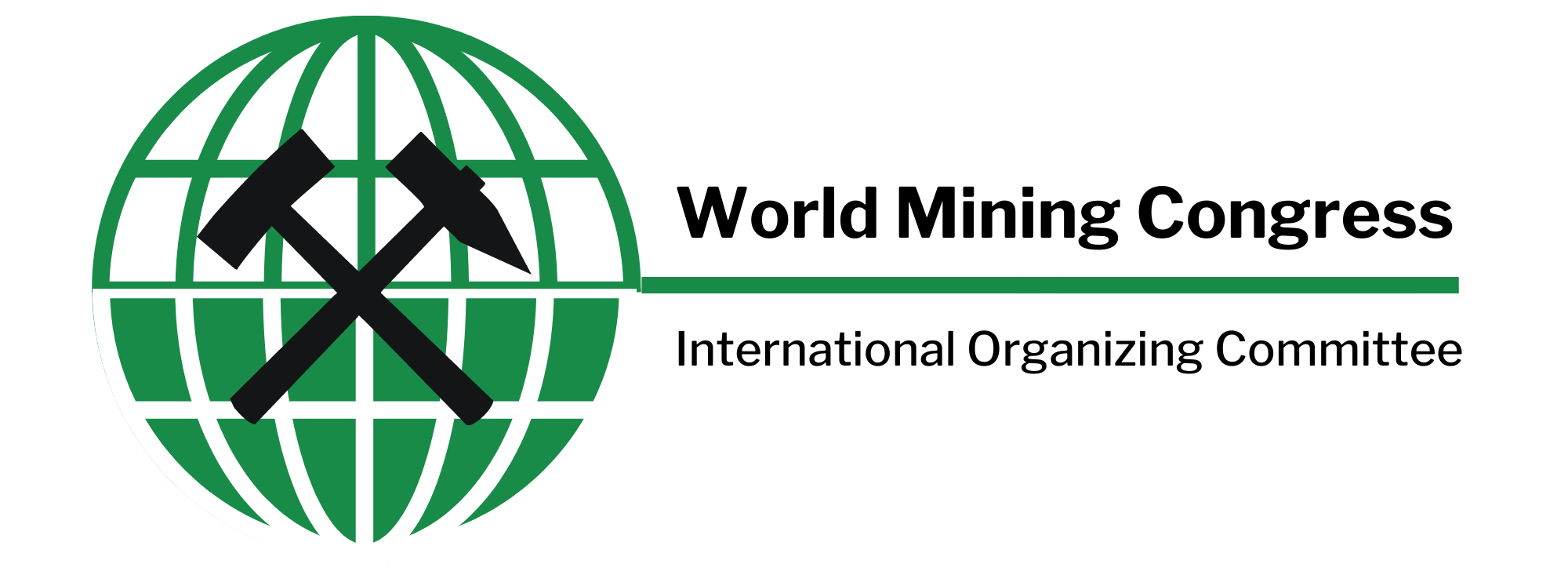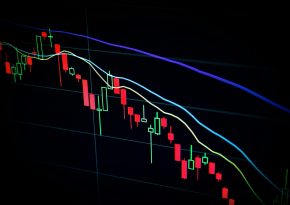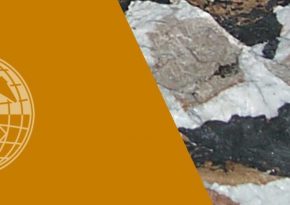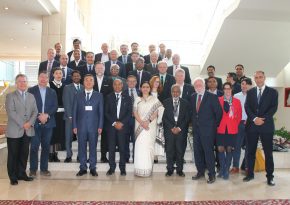25th October 2023 The European Unions Raw Materials Initiative (Base for the ECRM Act)
Securing a sustainable supply
Securing a sustainable supply of raw materials is a key priority for the European Union. Raw materials, such as metals and minerals have become increasingly important to the EU’s economy, growth, and competitiveness. More than 30 million jobs in the EU and many key economic sectors such as automotive, aerospace, and renewable energy are dependent on a sustainable supply of raw materials. Raw materials are particularly crucial for the development of modern environmentally friendly technologies and a strong European industrial base. Without them, there wouldn’t be any smartphones, laptops, or cars.
The European Commission began work on a Raw Materials Initiative back in 2008. The basic work was carried out by “ad hoc working groups” from the Raw Materials Supply Group. One working group dealt with the evaluation of the criticality of raw materials.
The criticality of raw materials was measured by comparing the economic importance of a raw material with the supply risk:
- Economic importance: this analysis is achieved by assessing the proportion of each material associated with industrial megasectors at an EU level. These proportions are then combined with the megasectors’ gross value added (GVA) to the EU’s GDP. This total is then scaled according to the total EU GDP to define an overall economic importance for a material.
- Supply risk: in order to measure the supply risk of raw materials, the World Governance Indicator (WGI; governmental risk) was used. This indicator takes a variety of influences into account such as voice and accountability, political stability and absence of violence, government effectiveness, regulatory quality, rule of law or control of corruption.
The first criticality analysis for raw materials was published in 2010. 14 critical raw materials (CRM) were identified from a list of 41 non-energy, non-food materials:
Antimony, Beryllium, Cobalt, Fluorspar, Gallium, Germanium, Graphite, Indium, Magnesium, Niobium, PGM, Rare Earth, Tantalum, Tungsten
In the 2011 Communication on raw materials (COM (2011)25 of 2 February 2011), the Commission formally adopted this list and stated that it would continue to monitor the issue of critical raw materials in order to identify priority actions. It also committed to undertake a regular review and update of this list at least every 3 years (see: communication on raw materialsEN)
In 2014, 54 raw materials were tested for their criticality using the same assessment method. Eight additional raw materials were classified as critical and the list was expanded to 20 raw materials (see: communication on the list of critical raw materials 2014EN)
The criticality zone was defined by the same thresholds as in 2010 to ensure comparability of the results. This extended candidate list includes 7 new abiotic materials and 3 biotic materials. In addition, greater detail is provided for the rare earth elements by splitting them into 'heavy’ and 'light’ categories.
In 2017, the criticality of raw materials was further examined, using a slightly modified assessment method. They also integrate the methodological improvements identified by the Commission in the project ‘assessment of the methodology on the list of critical raw materials’, in areas such as manufacturing applications, trade, substitution, recycling: (see: communication on the list of critical raw materials 2017EN).
Furthermore in January 2018, the Commission published a report highlighting the potential for a more circular usage of CRMs in our economy. Reviewing important sectors for CRMs, it describes relevant EU policies, refers to key initiatives, presents and gives sources of data, identifies good practices and indicates possible further actions (see: Report on CRMs and the circular economyEN).
In May 2019, the Commission issued a report 'Recovery of critical and other raw materials from mining waste and landfills – state of play on existing practices’. It shows existing practices to recover critical and other raw materials from extractive (see:JRC science for policy reportEN)
A further review of the criticality of raw materials took place in 2020, in which 30 raw materials were now classified as critical (see: communication on critical raw materials).
The most recent review of the criticality of mineral raw materials took place in 2023, when strategic raw materials were also reported for the first time. This list now includes the following raw materials:
Bauxite, Antimony, Arsenic, Baryte, Beryllium, Bismuth, Boron/Borate, Cobalt, Coking Coal, Copper ,Feldspar, Fluorspar, Gallium, Germanium, Hafnium, Helium, Heavy rare earth elements, Lithium, Light rare earth elements, Nickel, Magnesium, Manganese, Natural Graphite, Niobium, Platinum group metals, Phosphate Rock, Phosphorus, Scandium, Silicon metal, Strontium, Tantalum, Titanium metal, Tungsten, Vanadium (see: Study on the Critical Raw Materials for the EU 2023 – Final ReportEN)
Strategic minerals are defined to be crucial to technologies important to Europe’s green and digital ambitions and for defence and aerospace applications, while being subject to potential supply risks in the future:
Bismuth, Boron – metallurgy grade, Cobalt, Copper, Gallium, Germanium, Lithium – battery grade, Magnesium metal, Manganese – battery grade, Natural Graphite – battery grade, Nickel – battery grade, PGM (Platinum Group Metals) Rare Earth Elements for magnets (Nd, Pr, Tb, Dy, Gd, Sm, and Ce), Silicon metal, Titanium metal and Tungsten have been proposed by the Commission as stategic minerals. However copper and nickel do not meet the CRM thresholds, but are included as Strategic Raw Materials, because they are crucial for transformation technologie
The Critical Raw Materials Act 2023
In March 2023, the Critical Raw Materials Act was proposed by the European Commission.
While demand for critical raw materials is projected to increase drastically, Europe heavily relies on imports, often from quasi-monopolistic third country suppliers.
The EU needs to mitigate the risks for supply chains related to such strategic dependencies to enhance its economic resilience, as highlighted by shortages in the aftermath of the Covid-19 and the energy crisis following Russia’s invasion of Ukraine. This can put at risk the EU’s efforts to meet its climate and digital objectives.
The Regulation and Communication on critical raw materials will leverage the strengths and opportunities of the Single Market and the EU’s external partnerships to diversify and enhance the resilience of EU critical raw material supply chains.
The Critical Raw Materials Act will also improve the EU capacity to monitor and mitigate risks of disruptions and enhances circularity and sustainability.
Together with the reform of the electricity market design and the Net Zero Industry Act, the measures on critical raw materials create a conducive regulatory environment for the net-zero industries and the competitiveness of European industry, as announced in the Green Deal Industrial Plan.
Internal actions
The Critical Raw Materials Act will equip the EU with the tools to ensure the EU’s access to a secure and sustainable supply of critical raw materials, mainly through:
Setting clear priorities for action: In addition to an updated list of critical raw materials, the Act identifies a list of strategic raw materials, which are crucial to technologies important to Europe’s green and digital ambitions and for defence and aerospace applications, while being subject to potential supply risks in the future.
The Regulation embeds both the critical and strategic raw materials lists in EU law. The Commission proposal sets clear benchmarks for domestic capacities along the strategic raw material supply chain and to diversify EU supply by 2030:
- At least 10% of the EU’s annual consumption for extraction,
- At least 40% of the EU’s annual consumption for processing,
- At least 15% of the EU’s annual consumption for recycling,
- Not more than 65% of the Union’s annual consumption of each strategic raw material at any relevant stage of processing from a single third country.
Creating secure and resilient EU critical raw materials supply chains: The Act will reduce the administrative burden and simplify permitting procedures for critical raw materials projects in the EU. In addition, selected Strategic Projects will benefit from support for access to finance and shorter permitting timeframes (24 months for extraction permits and 12 months for processing and recycling permits). Member States will also have to develop national programmes for exploring geological resources.
Ensuring that the EU can mitigate supply risks: To ensure resilience of the supply chains, the Act provides for the monitoring of critical raw materials supply chains, and the coordination of strategic raw materials stocks among Member States. Certain large companies will have to perform an audit of their strategic raw materials supply chains, comprising a company-level stress test.
Investing in research, innovation and skills: The Commission will strengthen the uptake and deployment of breakthrough technologies in critical raw materials. Furthermore, the establishment of a large-scale skills partnership on critical raw materials and of a Raw Materials Academy will promote skills relevant to the workforce in critical raw materials supply chains. Externally, the Global Gateway will be used as a vehicle to assist partner countries in developing their own extraction and processing capacities, including skills development.
Protecting the environment by improving circularity and sustainability of critical raw materials: Improved security and affordability of critical raw materials supplies must go hand in hand with increased efforts to mitigate any adverse impacts, both within the EU and in third countries with respect to labour rights, human rights and environmental protection. Efforts to improve sustainable development of critical raw materials value chains will also help promoting economic development in third countries and also sustainability governance, human rights, conflict resolution and regional stability. Member States will need to adopt and implement national measures to improve the collection of critical raw materials rich waste and ensure its recycling into secondary critical raw materials. Member States and private operators will have to investigate the potential for recovery of critical raw materials from extractive waste in current mining activities but also from historical mining waste sites. Products containing permanent magnets will need to meet circularity requirements and provide information on the recyclability and recycled content.
International Engagement
Diversifying the Union’s imports of critical raw materials: The EU will never be self-sufficient in supplying such raw materials and will continue to rely on imports for a majority of its consumption. International trade is therefore essential to supporting global production and ensuring diversification of supply. The EU will need to strengthen its global engagement with reliable partners to develop and diversify investment and promote stability in international trade and strengthen legal certainty for investors. In particular, the EU will seek mutually beneficial partnerships with emerging markets and developing economies, notably in the framework of its Global Gateway strategy.
The EU will step up trade actions, including by establishing a Critical Raw Materials Club for all like-minded countries willing to strengthen global supply chains, strengthening the World Trade Organization (WTO), expanding its network of Sustainable Investment Facilitation Agreements and Free Trade Agreements and pushing harder on enforcement to combat unfair trade practices.
It will further develop Strategic partnerships: The EU will work with reliable partners to promote their own economic development in a sustainable manner through value chain creation in their own countries, while also promoting secure, resilient, affordable and sufficiently diversified value chains for the EU.
Next Steps
The proposed Regulation is currently discussed inbetween Commission, Council and European Parliament. Agreement on a final resolution is expected in Q4 2023. This initiative comprises a Regulation and a Communication.
The Regulation sets a regulatory framework to support the development of domestic capacities and strengthen sustainability and circularity of the critical raw material supply chains in the EU.
The Communication proposes measures to support the diversification of supply chains through new international mutually supportive partnerships. The focus is also on maximising the contribution of EU trade agreements, in full complementarity with the Global Gateway strategy.
The Critical Raw Materials Act was announced by President von der Leyen during her 2022 State of the Union speech, where she called to address the EU’s dependency on imported critical raw materials by diversifying and securing a domestic and sustainable supply of critical raw materials. It responds to the 2022 Versailles Declaration adopted by the European Council which outlined the strategic importance of critical raw materials to guarantee the Union’s strategic autonomy and European sovereignty. It also responds to the conclusions of the Conference on the Future of Europe and to the November 2021 resolution of the European Parliament for an EU critical raw materials’ strategy.
The measures build upon the 2023 criticality assessment, the foresight report focusing on strategic technologies, and the actions initiated under the 2020 Action Plan on critical raw materials. The proposal is underpinned by the scientific work of the Commission’s Joint Research Centre (JRC). Together with the JRC Foresight study, the JRC also revamped the Raw Materials Information System which provides knowledge on raw materials, both primary (extracted/harvested) and secondary, for example from recycling. The tool provides information on specific materials, countries, as well as for different sectors and technologies and includes analyses for both supply and demand, current and future.
The Critical Raw Material Act is presented in parallel to the EU’s Net Zero Industry Act, which aims to scale up the EU manufacture of key carbon neutral or “net-zero” technologies to ensure secure, sustainable and competitive supply chains for clean energy in view of reaching the EU’s climate and energy ambitions.
World Mining Congress
2026The 27th World Mining Congress will be organized in 2026 in Peru.
IOC / WMC Meeting
2024The 105th IOC/WMC meeting will be organized on April 14th, 2024 in Santiago de Chile.










